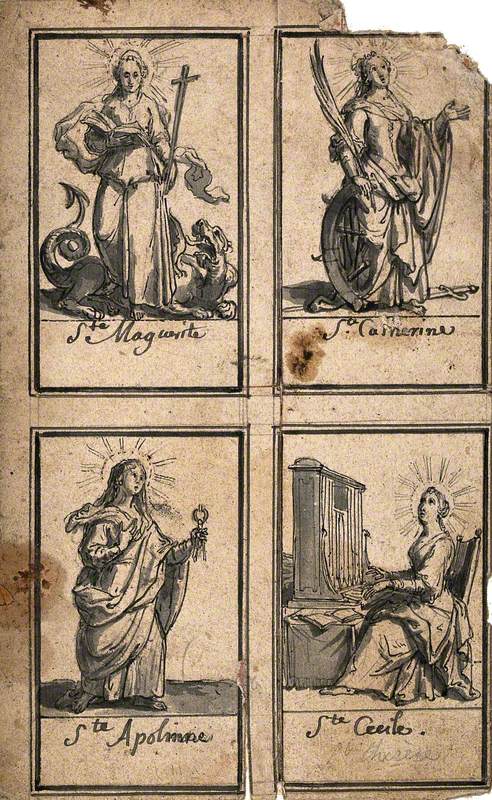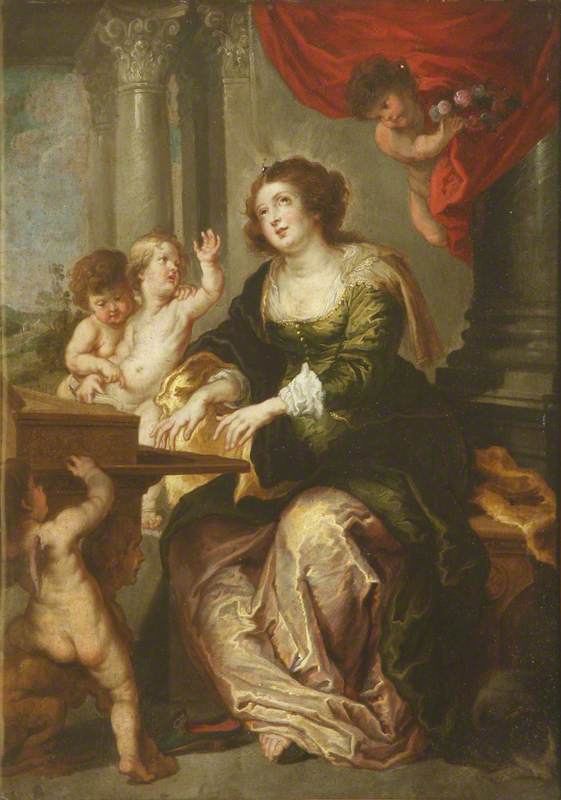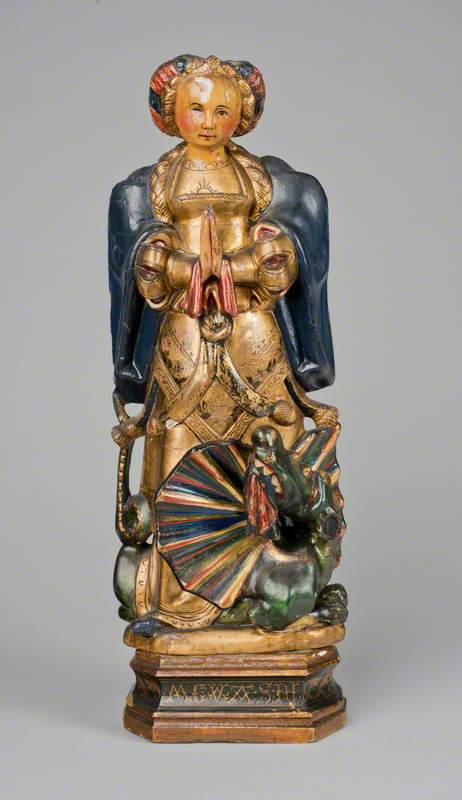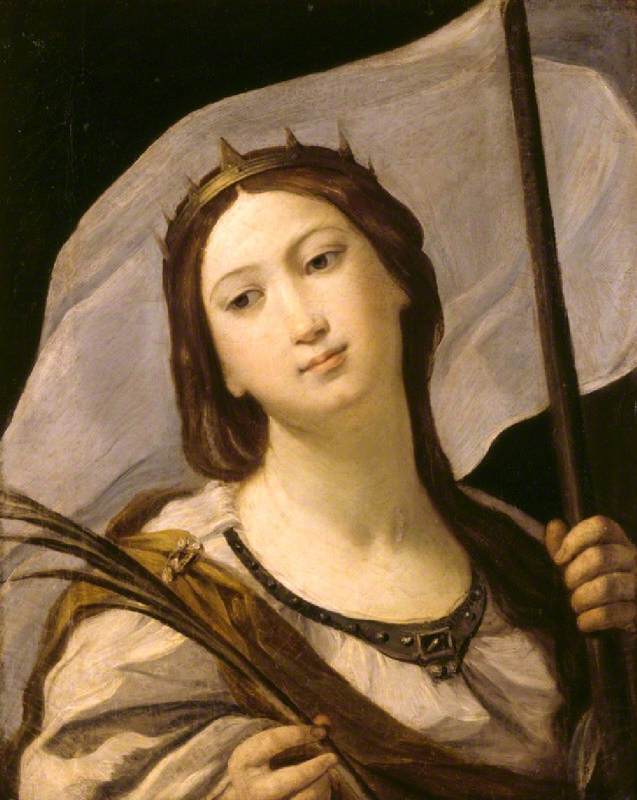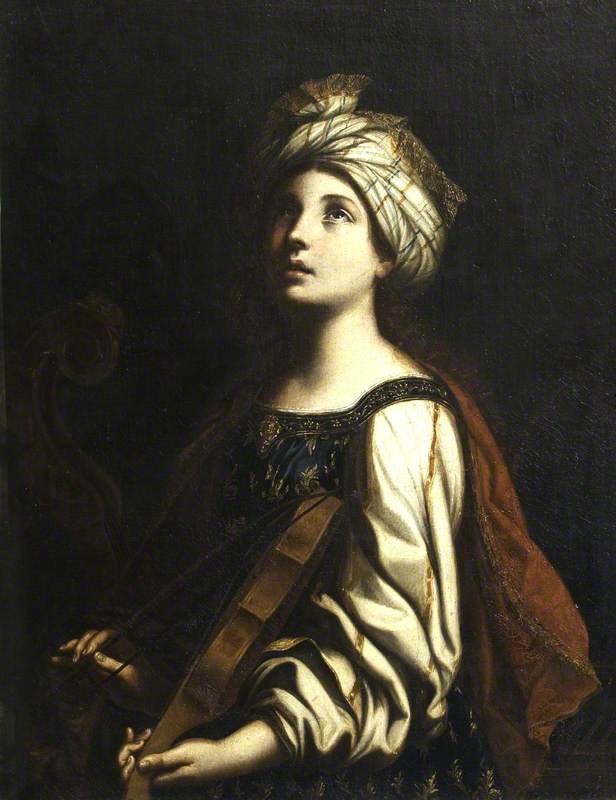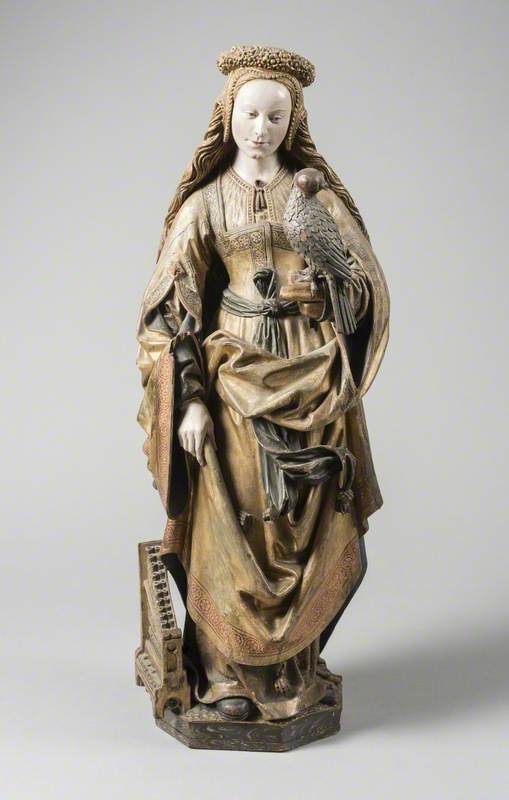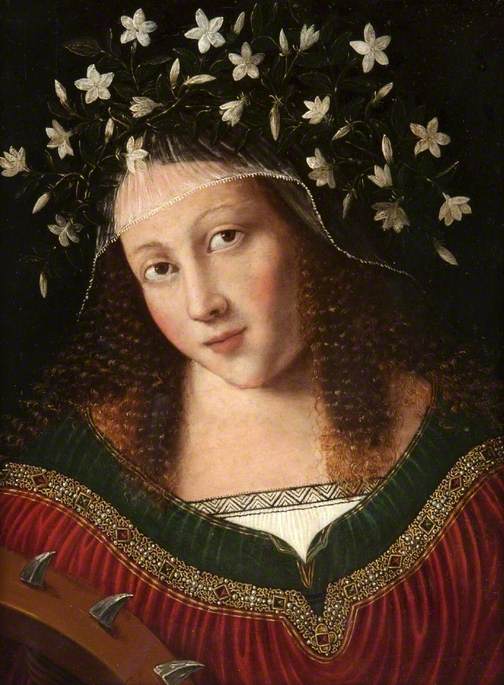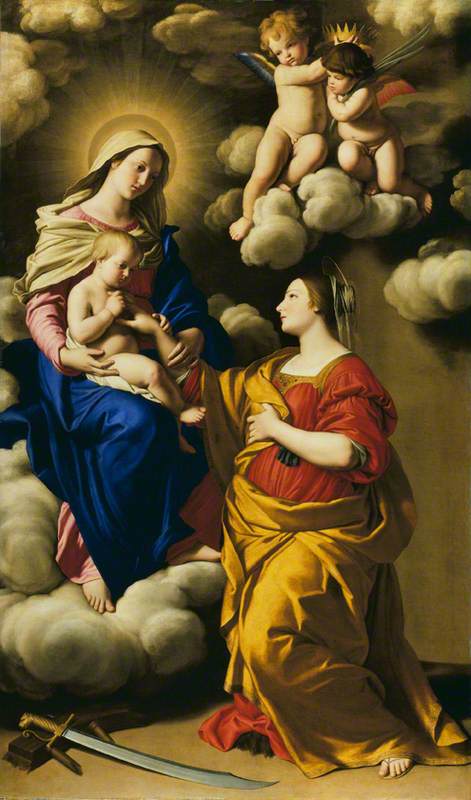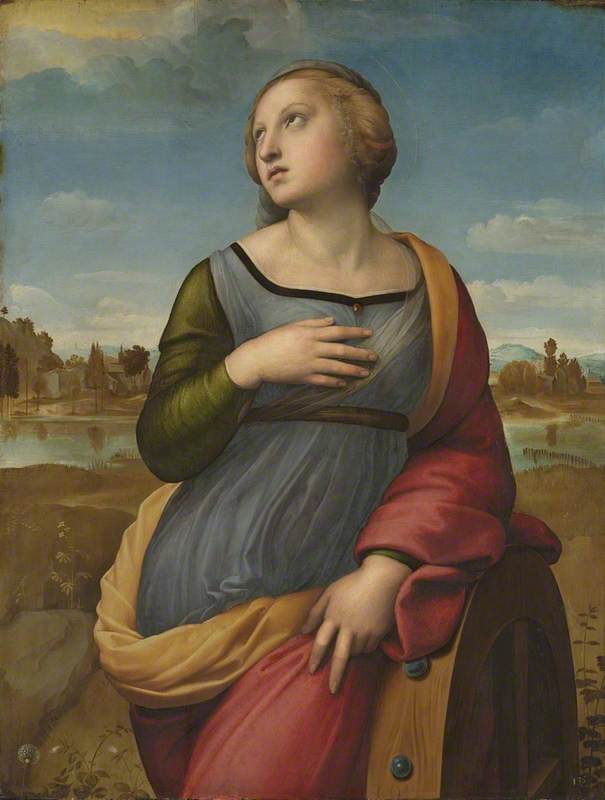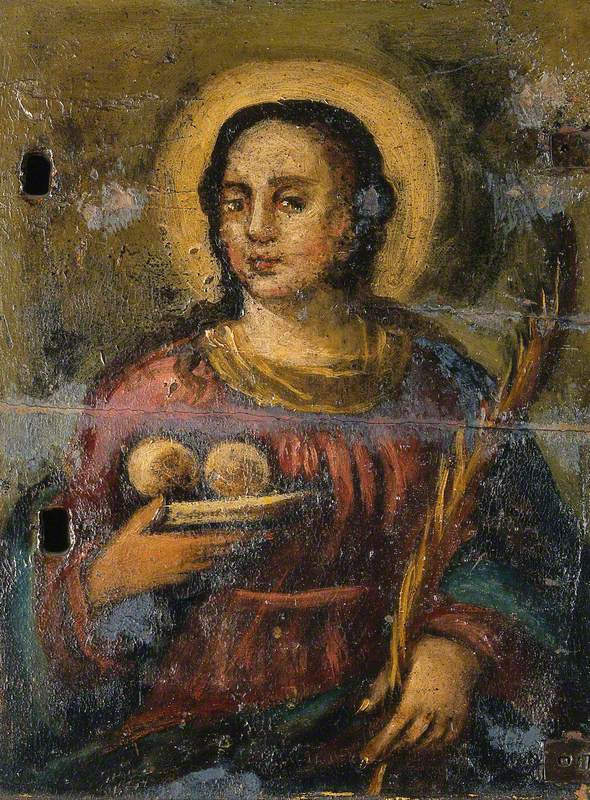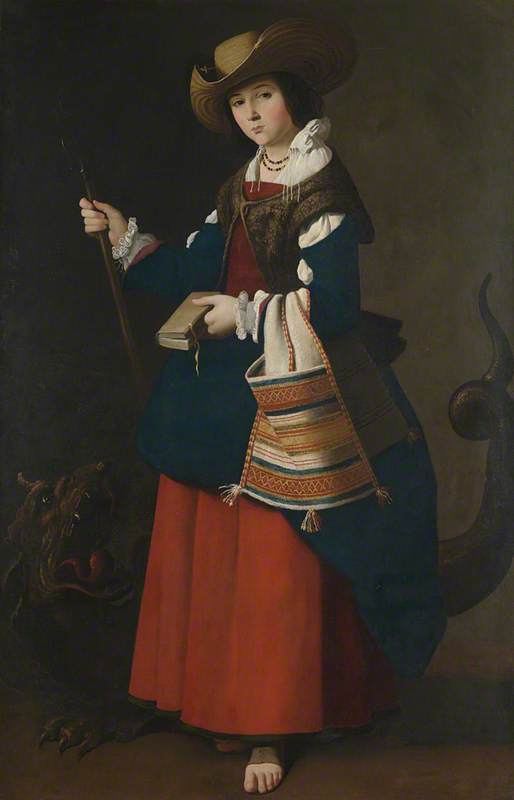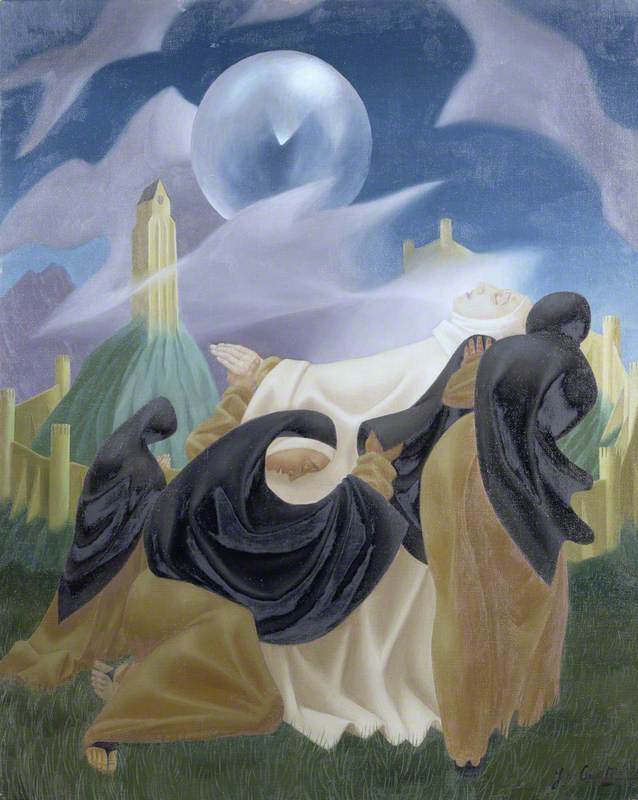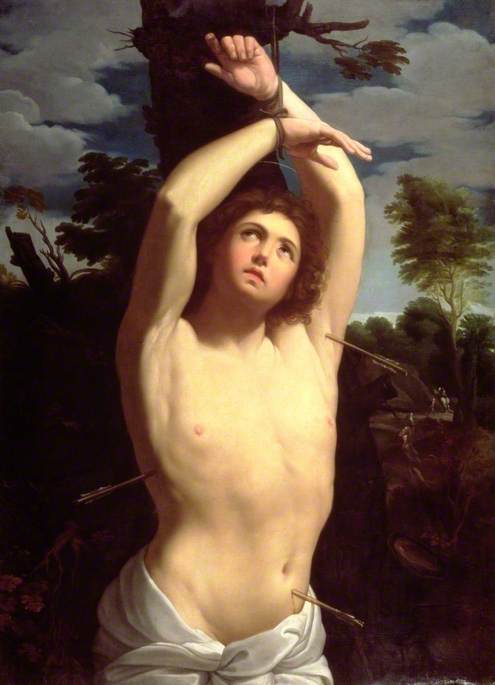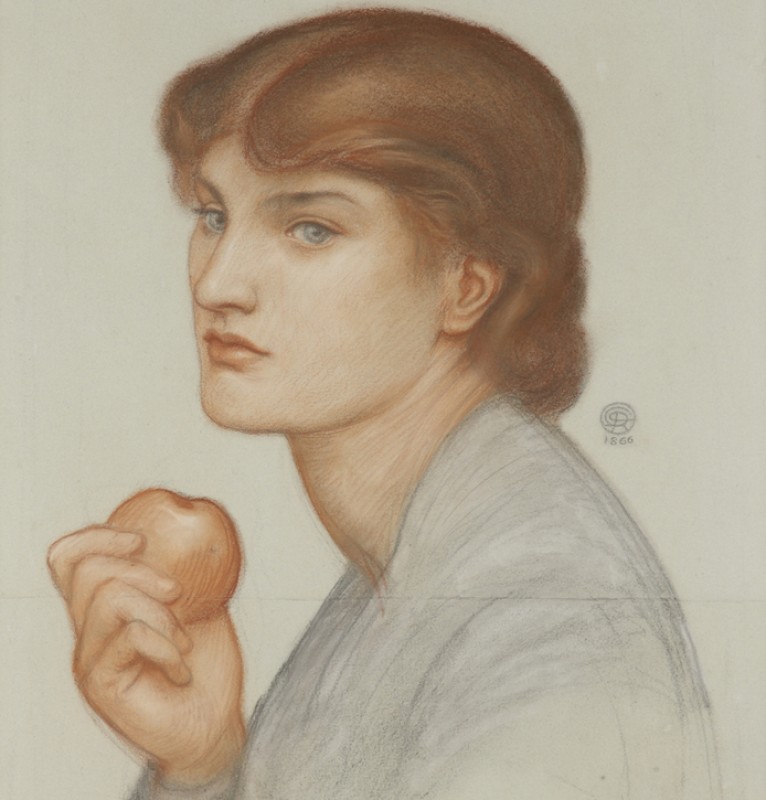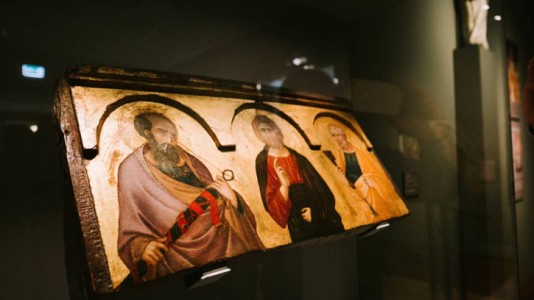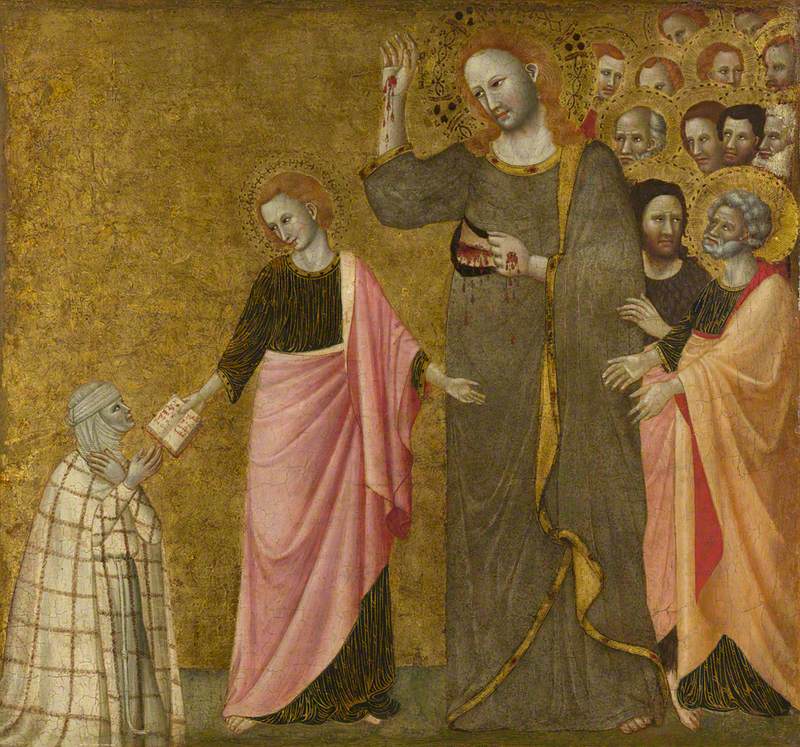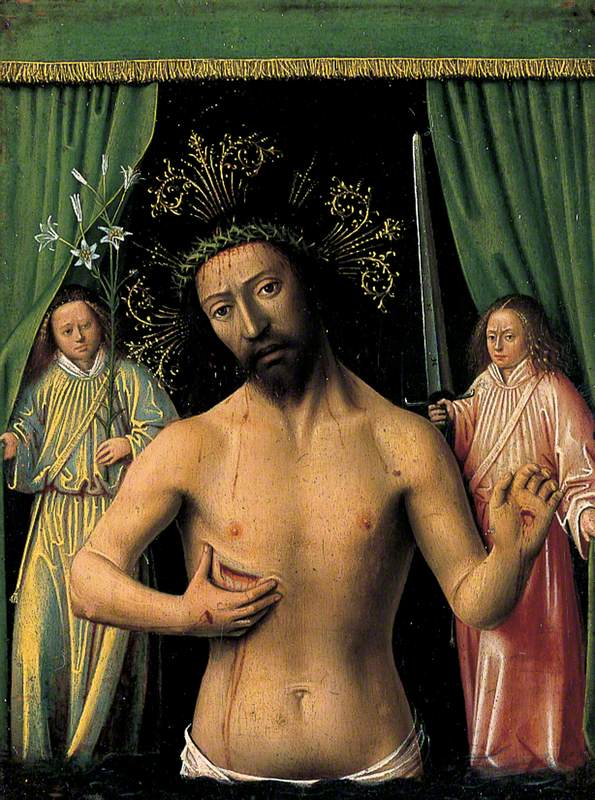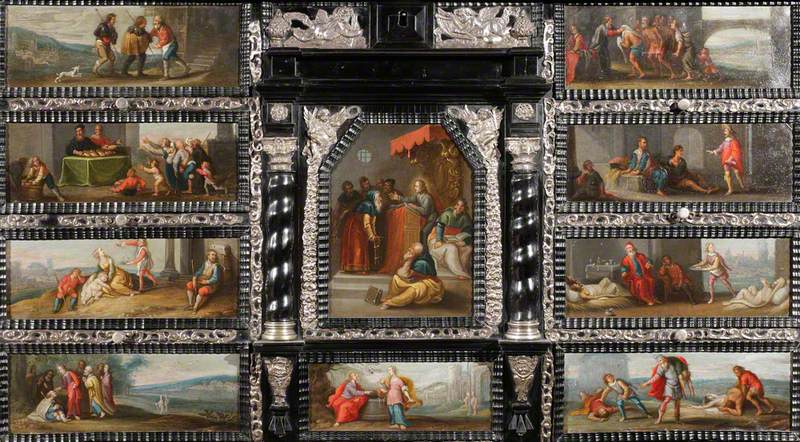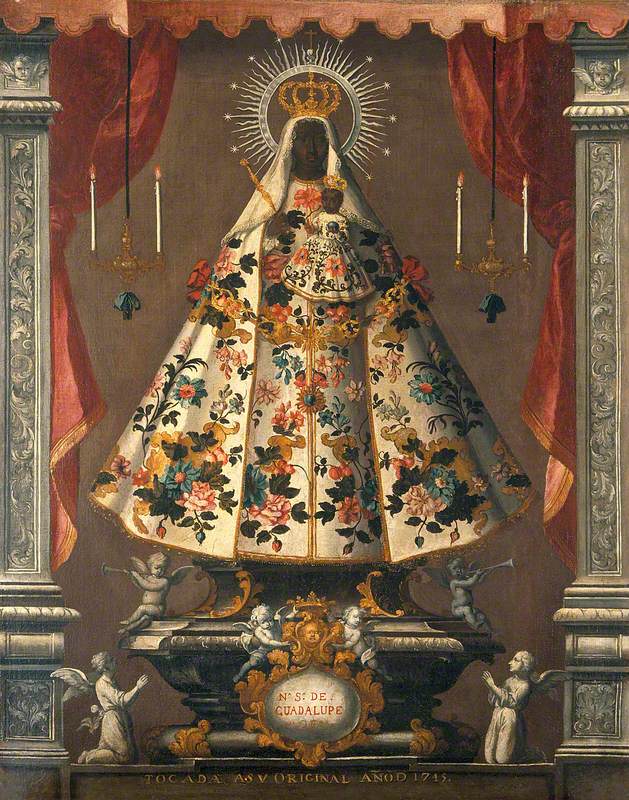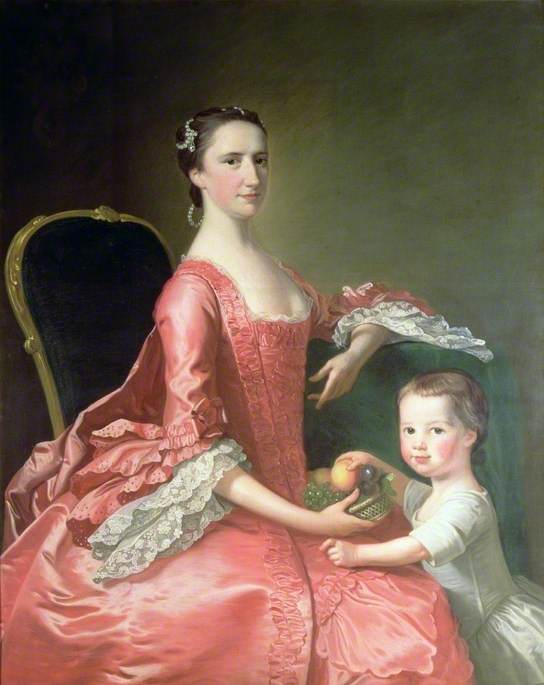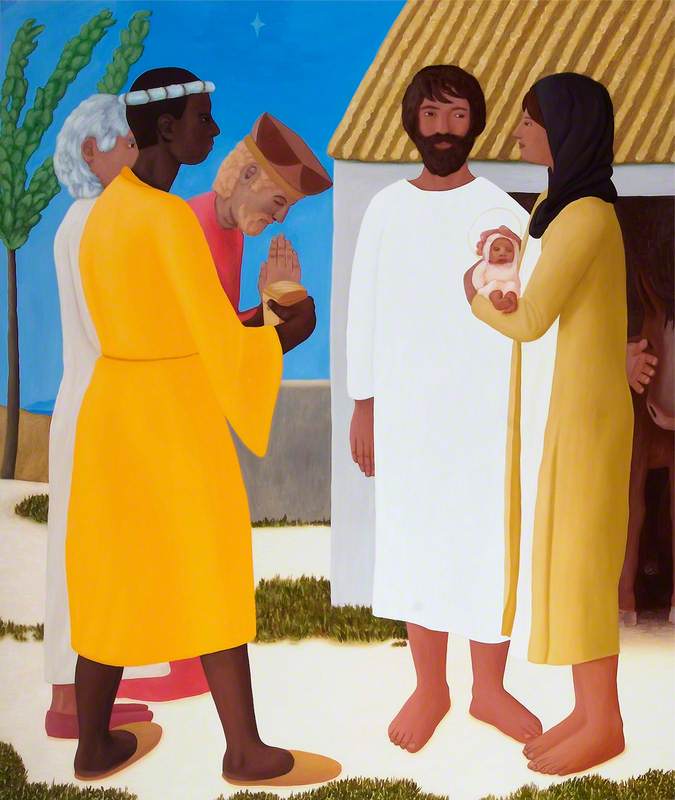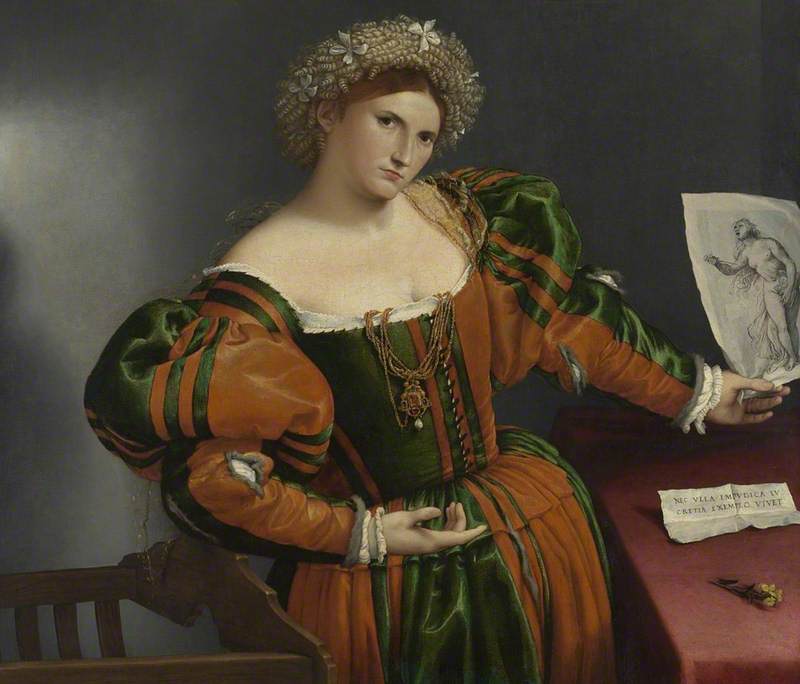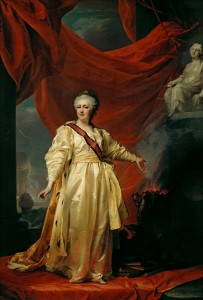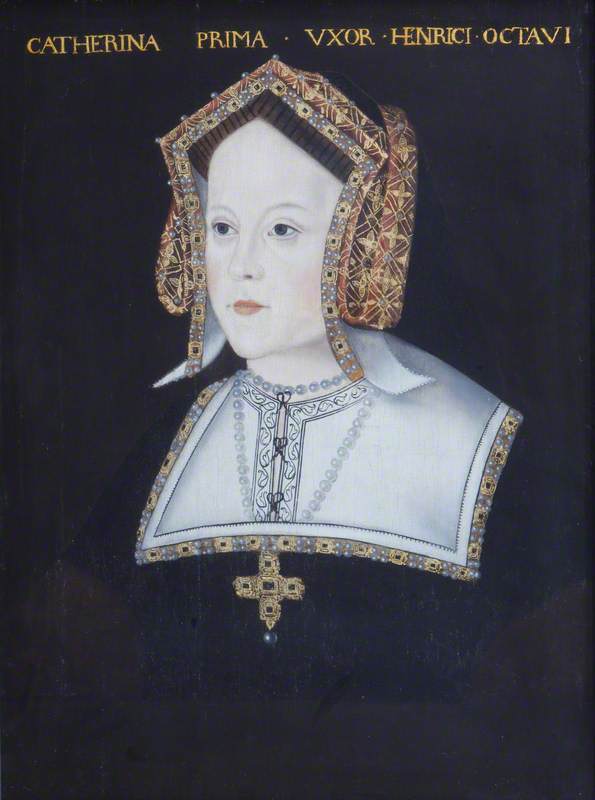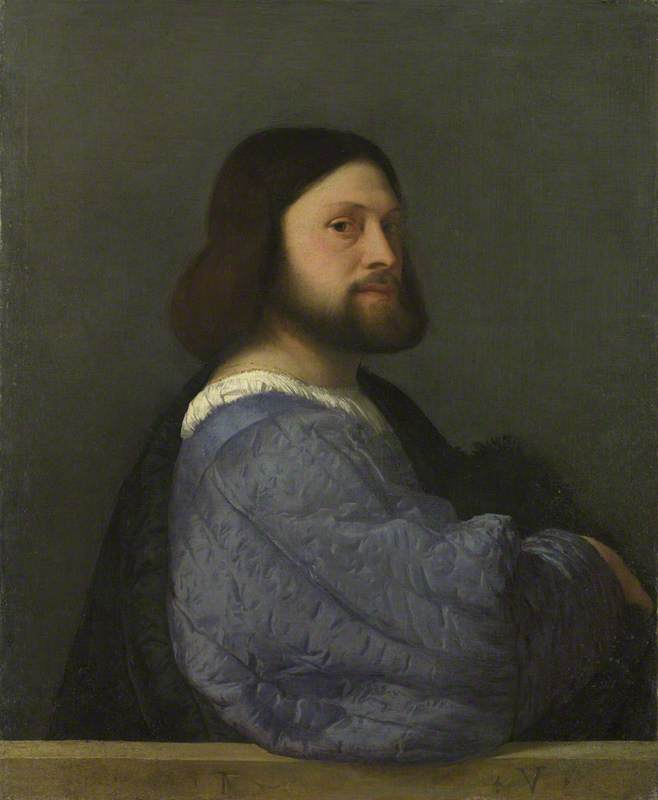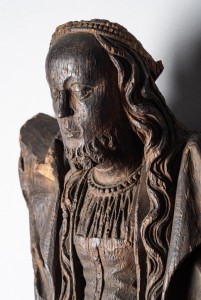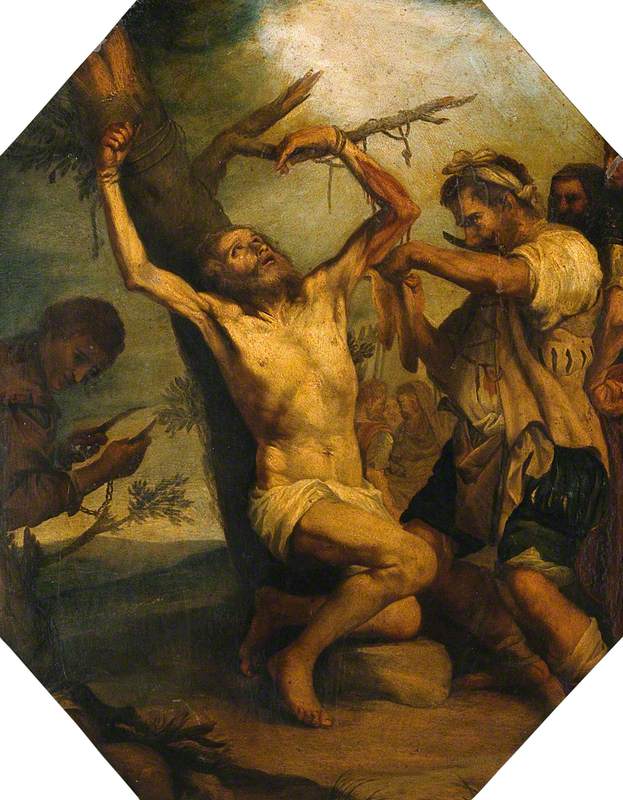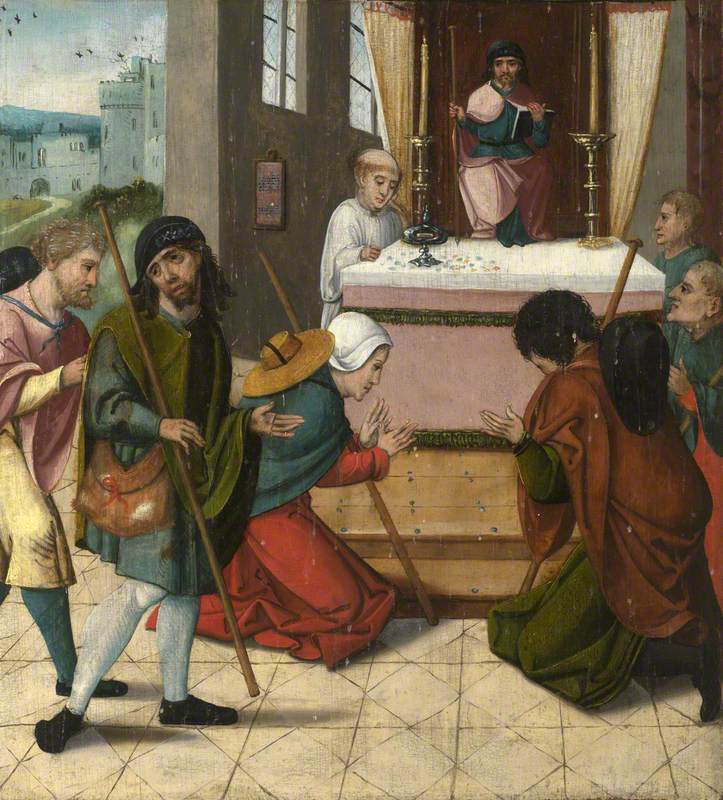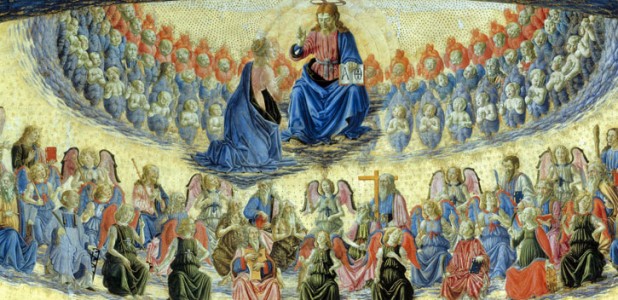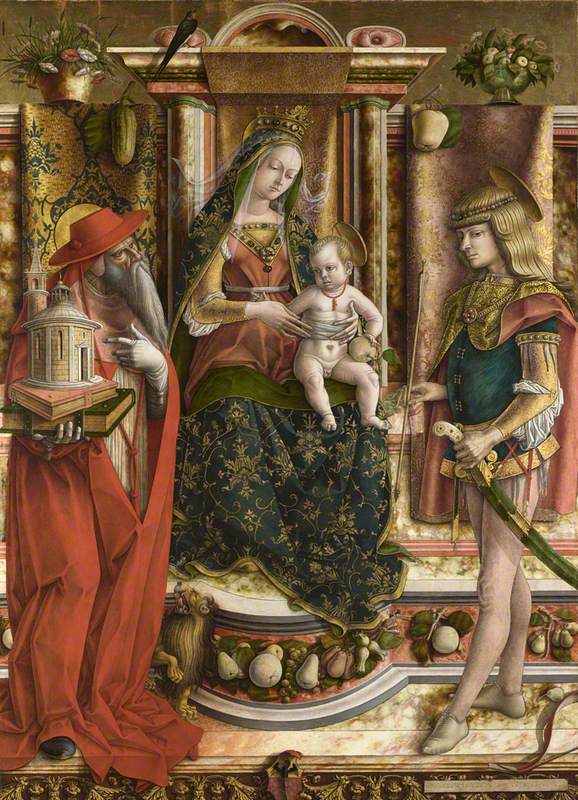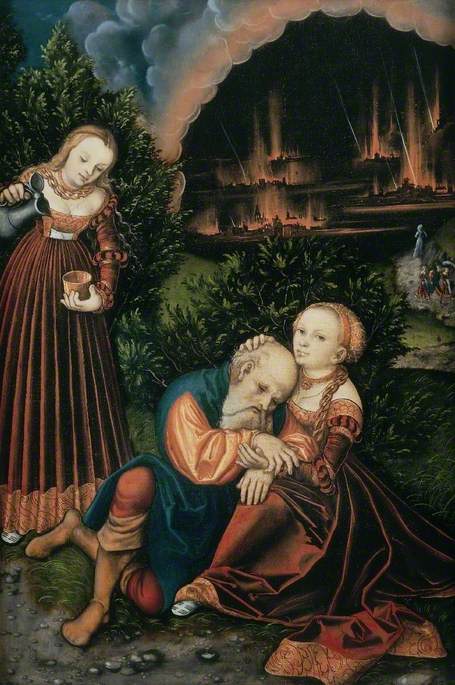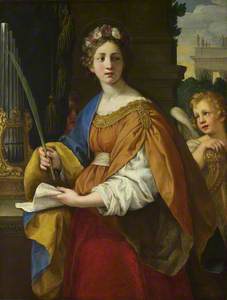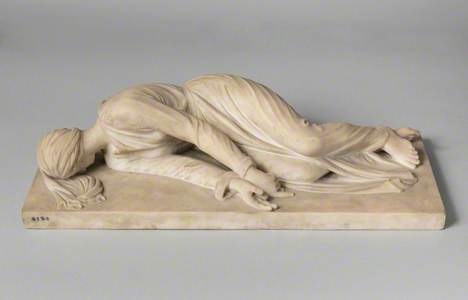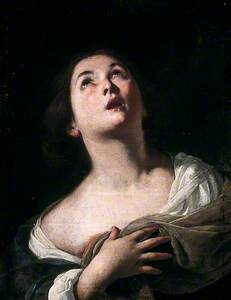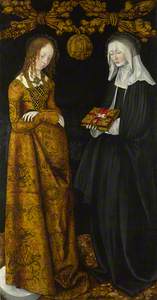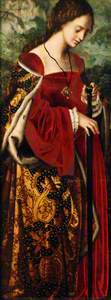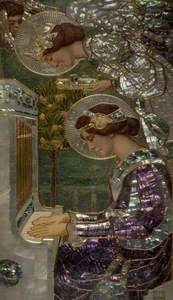Saints are probably some of the most looked-at images in art history and a subject that artists have returned to time and again. Although we live amongst churches, schools and institutions which bear the names of saintly figures we often remain unaware of their stories and the all-important symbols, known as 'attributes', that artists use to identify them.
Low literacy rates in the Middle Ages meant that symbolic details in art were of paramount importance to the Church when it came to educating and instructing viewers. By the time of Jacobus de Voragine's widely-read The Golden Legend (1259–1266) (later translated into English by William Caxton in the fifteenth century), a fascination with the lives of saints and a 'cult of relics' flourished across Europe, inciting pilgrims to travel to the enshrined sites of saints. In response, artists adopted specific forms of iconography that made saints quickly identifiable to the layperson.
The lives of female saints reveal acts of selfless charity, visions, charismatic preaching and miraculous intercessions in the lives of ordinary people as well as stories of incredible bravery in defending their virtue and the Christian faith, often resulting in brutal martyrdom. Each one is a patron or protector of some aspect of human life as we shall see in this exploration of both familiar and lesser-known saints…
Catherine of Alexandria
Perhaps the only saint to lend her name to a firework, Catherine of Alexandria is one of the most identifiable saints, with the spiked wheels on which she was due to be torn to death always by her side. By legend the daughter of a king, but according to traditional accounts the daughter of the governor of Alexandria, Constus, during the reign of Maximian, she challenged Roman persecution of Christians under the succeeding rule of Maxentius and triumphed in convincing and converting a group of philosophers to her faith.
Self Portrait as Saint Catherine of Alexandria
c.1615–1617
Artemisia Gentileschi (1593–1654 or after) 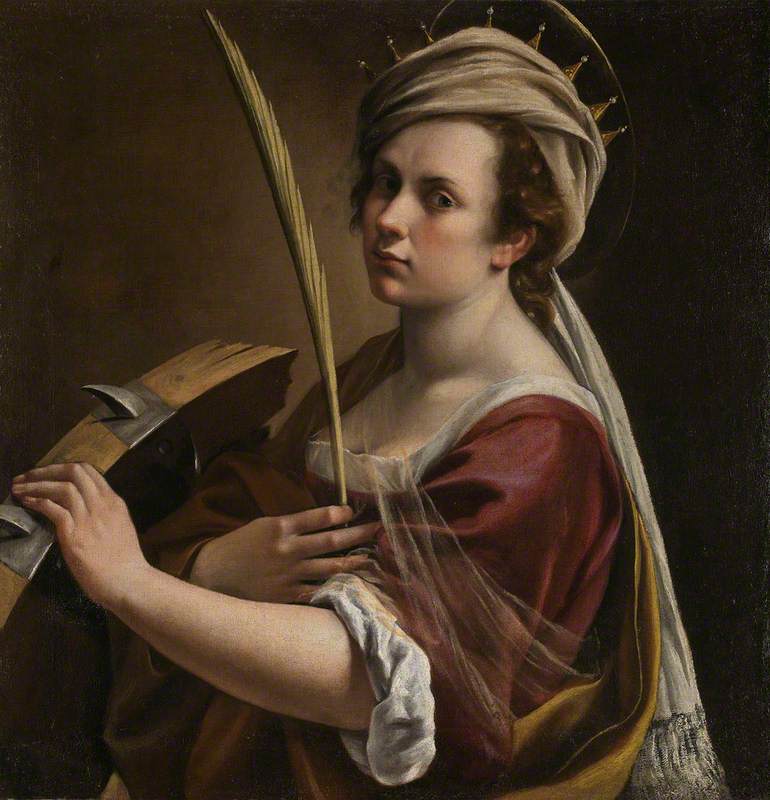
Punished initially by imprisonment and starvation, she was sentenced to death on a breaking wheel – an ancient form of torture reserved for those who had committed the worst crimes. When Catherine was placed on the wheel, suddenly a burst of fire from heaven split it asunder causing it to shatter. Instead, she was executed by beheading under the Emperor's order in around 305 BC.
She is the patron saint of philosophers and scholars, but also other professions including orators, tailors, nannies and nurses. In a dream, Catherine foresaw her mystic marriage to Christ, which is why some paintings such as the one above by Sassoferrato show the child Jesus placing a ring on her finger. Some of the most famous depictions of Catherine include Raphael's early-sixteenth century depiction and Artemisia Gentileschi's Self Portrait as Saint Catherine of Alexandria, both of which can be found in The National Gallery.
Catherine of Siena
Not to be confused with the martyred Catherine of Alexandria, this Catherine of Siena was born in 1347 to a wool dyer. She took a vow of chastity and entered a Dominican order at the age of 18. After many years of devoting herself to a cloistered existence dominated by prayer, she emerged to minister to the sick and formed a band of disciples. She later intervened in the matters of the church, urging Pope Gregory IX to leave Avignon where she considered him to be in captivity, and return to Rome.
Saint Catherine of Siena
17th C
Baldassare Franceschini (1611–1690) (circle of) 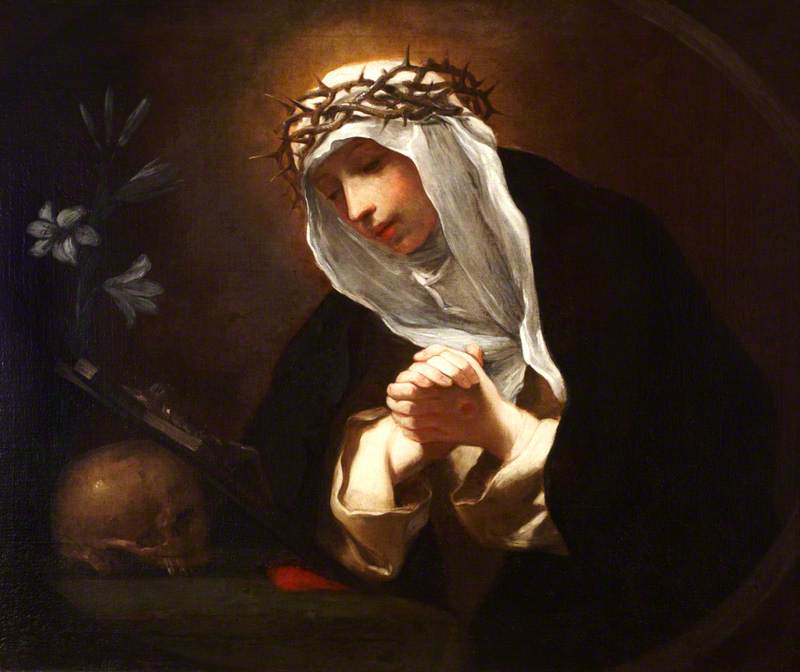
Catherine is often seen in paintings wearing the white robes of the Dominican order, a crown of thorns and receiving the stigmata, and her attributes include a lily, a book and a cross. She is the patron saint of nurses and one of the patron saints of Italy.
Saint Cecilia
Saint Cecilia is well known as the patron saint of music and has inspired a number of compositions by English composers such as Handel's Ode for St Cecilia's Day and Britten's Hymn to St Cecilia, which uses a poem by W. H. Auden for its text.
Yet her association with music appears to derive from a mistranslation of the story of her passion rather than any direct evidence of a love of music. As a young Christian from Rome who had taken a vow of virginity, Cecilia was nevertheless still betrothed, but converted her fiancé on their wedding night, an event which led to both of them being martyred.
Building on the myth behind the music, Cecilia is traditionally painted playing or holding organ pipes or a stringed instrument. In Cortona's painting, you can also see the halo that denotes her status as a saint and the palm branch symbolising martyrdom. In Stefano Maderno's sculpture, the body of Cecilia is captured in the position in which the preserved body was discovered in 1599 in the Church of Santa Cecilia in Trastevere.
Saint Ursula
The legend of Saint Ursula derives from relics found in Cologne in the eighth century which were related to an inscription marked 'Ursula'. The story goes that she was the daughter of a Christian king in Britain who agreed to marry a pagan on condition that she could first go on a pilgrimage with her 10 handmaidens, each of whom was accompanied by 1,000 virgins. Though they made it to Rome, on their return to Cologne they found it besieged by Attila and his Huns who massacred the virgins.
The Martyrdom of Saint Ursula and the 11,000 Virgins
c.1492
Master of the Saint Ursula Legend (Cologne) (active c.1485–c.1515) 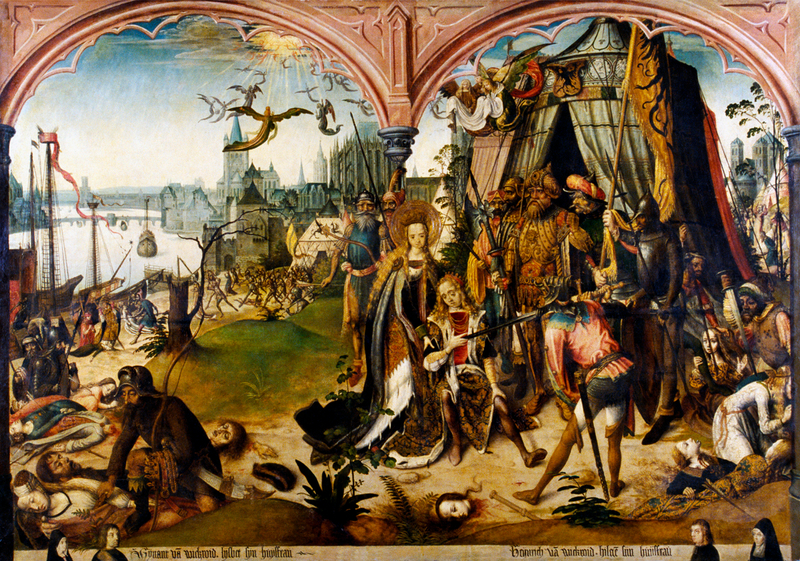
Ursula was initially spared, but when she refused to marry Attila she was killed with an arrow, one of her attributes. Ursula is typically portrayed wearing a crown and often shown sheltering her handmaidens under a large cape. In recognition of her teaching to the 11,000 virgins, she is the patron saint of girls and students. In this painting, the slaughter of the virgins is depicted in gruesome detail while an archer waits menacingly behind Saint Ursula to deliver her fate.
Saint Lucy
The patron saint of electricians and ophthalmologists, Saint Lucy is always associated with light and is instantly recognisable in paintings as the saint holding her eyes on a plate.
Saint Lucy
(triptych, right wing) c.1500
Master of the Lee Triptych (active c.1500) 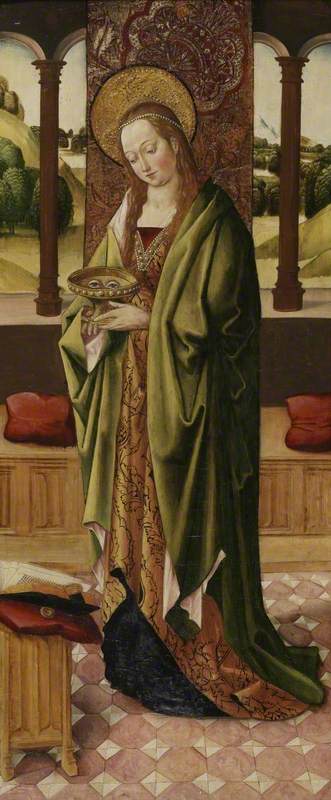
Another female saint who was subjected to brutal treatment because of her refusal to marry, she is said in some accounts to have plucked out her eyes rather than give up her virginity. In other accounts, it is said that after attempts to force her into a brothel, threaten her with rape and burn her at the stake, her eyes were pulled out, but with God's help she reinserted them.
Saint Lucy
c.1473/1474, oil on canvas by Francesco del Cossa (c.1430–c.1477) 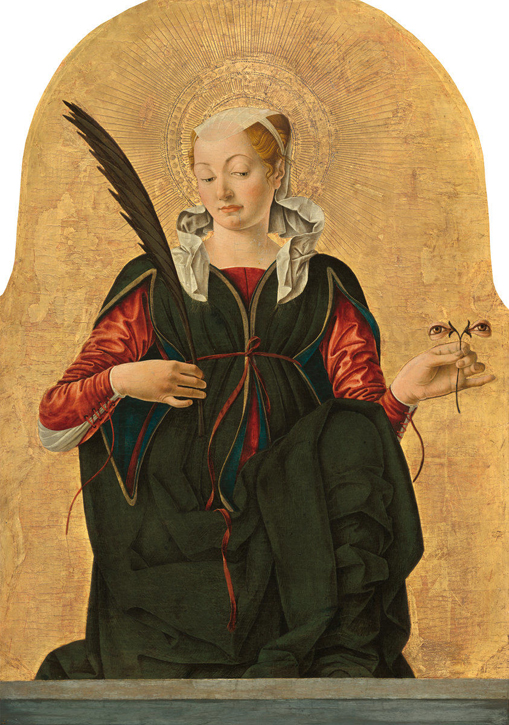
Legend has it that as Lucy argued with the Roman consul over her denunciation as a Christian, she was filled with the Holy Spirit, rendering her so heavy that officials were unable to move her. She finally died in Syracuse in AD 304 after being stabbed in the throat, and her feast day of 13th December is typically celebrated by a procession of young girls dressed in white, one of whom wears a crown of candles.
Saint Agatha
Like Lucy, Saint Agatha typically carries her attribute on a plate – in this case her breasts, which were brutally severed from her body with pincers. In this painting by Cavallino, however, her fate is portrayed with greater subtlety as she clutches her dress to her chest with just a hint of blood referencing her suffering.
Agatha was a noblewoman born into a Christian family, most probably in third-century Catania. Refusing to be seduced by the consul Quintianus, she was tortured, first by being sent to a brothel and then thrown into prison. The enraged consul ordered her breasts to be cut off but during the night she was visited and healed by Saint Peter. When she was then forced to walk over hot coals it is said that Mount Etna erupted and the torture ceased, but she was left to die of starvation. Agatha is invoked for safety against fire and is the patron saint of bell makers (referencing the shape of the breast), nurses and nannies.
Saint Joan
The patron saint of France, Saint Joan is typically depicted in a suit of armour and carrying a sword. Sometimes we see her mounted on a horse and charging into battle with a standard in her hand. Also known as Joan of Arc, the Maid of Orleans, she was an illiterate fifteenth-century farm girl who heard voices from God telling her to lead an army against the English who had taken possession of much of northern France and were due to advance on Orleans. She persuaded the king, Charles VII, of her mission and led the generals into battle, saving Orleans.
Captured and imprisoned by the English and burnt at the stake as a heretic in 1431 at the age of just 19, Joan is an interesting example of a saint only canonised in the twentieth century (1920) after centuries of deliberation.
Saint Margaret of Antioch
Saint Margaret's story derives from The Golden Legend. Born of nobility, she probably lived during Diocletian's reign in the fourth century and was baptised into the Christian faith. In Zurbarán's painting, we see her holding her attribute of a shepherd's crook, and standing defiantly in front of the sinister dragon she has just conquered.
Margaret was said to have been desired by the Roman prefect Olybrius, who spotted her tending sheep in the fields. Rejected by her and infuriated by her nobility and Christian faith, he had her tortured and thrown in jail where the dragon consumed her. Although she burst unharmed from its belly she was later beheaded. Her story led to her becoming the patron saint of pregnant women, as well as farmers, teachers and soldiers.
Saint Teresa of Ávila
Saint Teresa of Ávila is famous for her mystical experiences. She is frequently depicted in art in a state of ecstasy, with an arrow bearing 'IHS' (the initials representing Jesus) piercing her heart and a dove symbolising the Holy Spirit. Though these are absent from John Armstrong's depiction, the state of ecstasy is powerfully conveyed.
Born into an aristocratic Spanish family in 1515, Teresa entered the Carmelite convent of Ávila at the age of 20. Disillusioned with the convent's expansion to include laypeople, she isolated herself in order to devote her time to prayer and eventually founded the convent of Saint Joseph which operated as a traditional closed order. As well as being one of the patron saints of Spain, Teresa is also curiously patron saint of upholsterers.
Saint Veronica
Saint Veronica is relatively easy to spot as she is usually seen holding up the cloth with which she is believed to have wiped Christ's face on his journey to Calvary, and which has remained miraculously imprinted with an image of his face. The veil is stored at St Peter's Basilica in Rome where it is known as 'Veronica's shroud'.
Saint Veronica with the Sudarium
about 1420
Master of Saint Veronica (active c.1395–1415) 
It is unclear who Veronica might have been, as although she appears in images of the Gospels, she is not mentioned by name in the text and it is possible her name derives from the Latin-Greek hybrid vera icona (true image). Fittingly Veronica is the patron saint of textile merchants, photographers and cleaners – though, in the case of the veil, cleaning would clearly be unwise.
Saint Veronica (left wing), Saint Helena (right wing)
(verso) c.1470
Netherlandish School 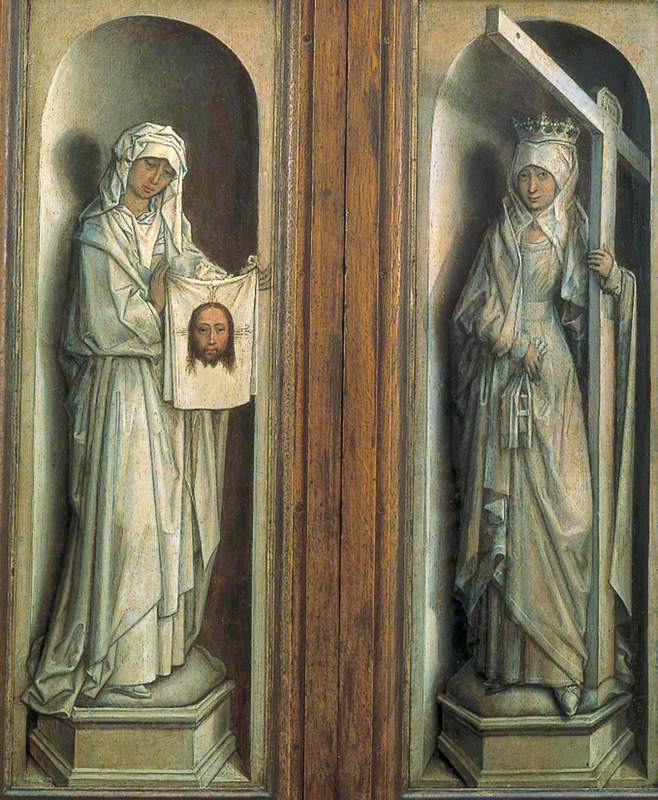
Saints form part of the fabric of our lives whether we have a faith or not – we mark their feast days, invoke their support, incorporate their attributes into our flags and happily refer to people who did us a good turn as 'saints'. And however literate we deem ourselves to be, a picture can paint a thousand words. Just like our ancestors in the Middle Ages, if we take the time to study the detail in a painting, we can enjoy identifying the saints from the visual clues given by an artist.
Lucy Ellis, freelance writer

